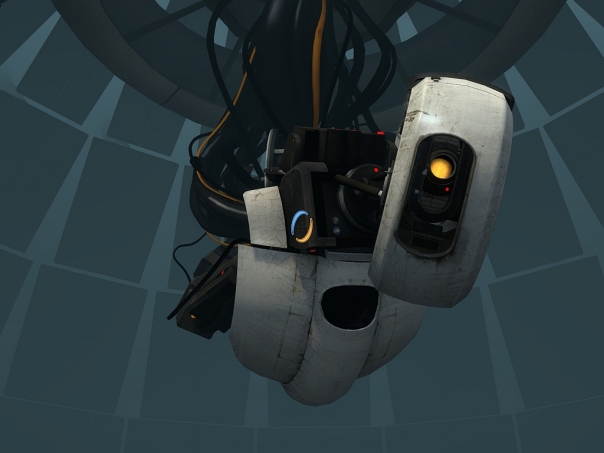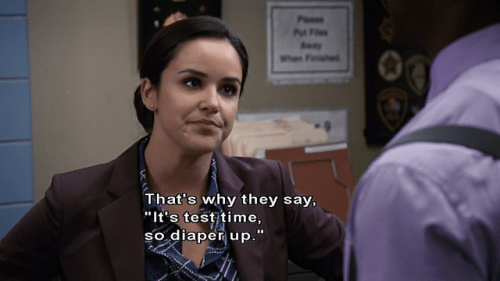Escape Room Narrative: Workshops and Beta Testing
Beta Testing is so important for games. What might make sense to you as a designer could utterly fall apart once it’s in the hands of your gamers. The puzzles are either too vague or overly complex. The super expensive tech you centered your room on is too finicky or breaks entirely. The eight players you thought would be totally a perfect number end up having nothing to do.

What I have yet to see as part of the beta testing process of escape rooms is to test out the actual narrative. Does it make sense? Are players following it or ignoring it? Are they feeling emotions you intended for them to feel?
My experience lies in theatre. Any script that is written is usually workshopped by other writers and actors and combed over so extensively that the poor writer is left in a daze with mountains of feedback to sift through. However, it’s that feedback that allows them to make their story the best that it can be…maybe…if they are good.
So how do we apply narrative workshopping to escape rooms? To be honest, I am just theorizing at this point but hopefully the lessons I have taken from script workshopping can apply to escape rooms. Here we go!
For Designers
The most important thing in beta testing, regardless whether it is for narrative or not, is not to lead your players in their feedback. This means keeping quiet and just letting them talk without imposing your ideas on them.

Yes, we would all like to go GlaDos on our players…but resist…
When your beta testers come out of that room, have a section of the feedback be just on narrative. When the time comes try taking the following steps:
- Ask one of the testers to describe the narrative. Don’t interrupt them. Don’t scoff if they missed an important point. You want to see what they absorbed and what they missed. If they missed a crucial plot point that might have helped them with a puzzle, there is something in your design that needs to change.
- Ask their teammates if anything was missed in the description. Even the most linear escape rooms are somewhat non-linear. With so many players working on puzzles, everyone is bound to miss something. The player you asked to describe might have been the one who never pays attention to the narrative.
- Ask or gauge how they feel: What do you want your players to feel? Did you want them to be scared? Excited? Emotionally moved? Did they feel attached to your characters or are they shrugging it off? The actual plot of the narrative might not contribute to how they feel but asking these questions will help designers in figuring out how to guide a narrative escape experience.
This is not just during the feedback session either. Try to gauge how they are feeling throughout the room (especially if you have cameras). If players are too frustrated with the puzzles, they might not pay attention to your narrative.
- Ask for their feedback: If they are comfortable with it, ask for suggestions on what might make more sense from a narrative standpoint. Let them point out all of your plot holes. Some might not feel confident in making creative suggestions, but there will definitely be those who have their own ideas of what could make a better story. Hear them out.
- Look for the consistencies: The difficulty with story workshopping is its subjectivity. Someone who hates horror is obviously going to have a lot of negative feedback for your serial killer zombie room. Someone who does not care about narrative is probably going to report they did not pick up on the story at all.
What you as a designer need to determine is what feedback needs to be listened to and what is merely personal opinion. It is an incredibly important skill to have. When I am workshopping my scripts, I listen for the consistencies in feedback. If one person does not get my big plot twist, I might listen to them. If twenty people don’t…I know something is wrong.
If your beta testers are consistently missing key plot points or narrative puzzle clues, then something is wrong with the writing or the room design. Your next job is to figure out what.
- Ask Why: Once you have your problematic consistencies figured out, it’s time to ask why they are problematic. Did you write an overly complicated plot? Do you simply need more signposting in the room such as a spotlight or bright colours to draw a player’s attention? Is your sound system just too crummy? Did you put all of your plot into the dreaded journal? Is there another way to deliver the narrative?
For Beta Testers
So you’ve been invited to beta test a game. It might be a friend who is opening an escape room. It might be an open call from the Facebook group. Regardless, you are here to test the heck out of the room.

Just because you did not design the room does not mean you get an easy pass! A beta tester has an important job to do and the best ones are able to cast a critical eye on the game while they play. And they are ruthless in their analysis.
Here are some ideas for the beta tester side of narrative:
- Note how you feel: The designer will hopefully be taking note of this already, but it’s worth it to take note of your emotions throughout the room. Are you frustrated? Is that frustration intentional?
- Ask Why: Scott Nicholson’s paper should be read by everyone interested in narrative and immersion. As a beta tester, it is your job to poke holes in the designer’s narrative. Do not be shy when asking the reason behind every single set piece, puzzle or plot point. Grill those designers.
When I helped design large scale escapes, part of my process was to describe my epic backstory to Errol. Errol would then stop me every time something did not make sense to him and ask a question (Why would someone do that? Why wouldn’t they do this instead?). If I had no good answer for him, if a character motivation or situation could not explain the potential plot hole, we had to scrap it. It was tough for me, but it helped to make a tighter and more cohesive experience.
- What did you need to know?: When recalling the plot, try to keep in mind what you absolutely needed to know for the experience to progress and what was just extra world building. Did that extra world building lead to red herrings and rabbit holes? Give this feedback to the designer. They may need to pull back on what they include in the room.
- Be prepared to explain yourself: It’s one thing to say you don’t like something. It’s another to say you don’t like something and explain why as well. Explain your reasoning. State your biases. Be able to tell the difference between your own opinion and a critical problem. Let the designer know everything about yourself to help them make an informed decision.
- Tell the designer what you liked: This is my own personal opinion, but it is just as important to know what worked as what did not work. It is not about massaging a designer’s ego (although it will soften the blow from all the criticism). If something in their story was effective, they need to know. It might help them enhance what is already working or help them solve what is not.
Moar Stories
If narrative is important to your room, it’s time to start making sure it works before your doors officially open. Do it as early and as often as possible. The tighter the stories we have in rooms, the more we can move forward in evolving them.
There is still a lot of new territory when it comes to beta testing stories. These suggestions are based on my own personal experience, but there might be other ways. If you try them out, by all means let me know how it worked! If you have other ideas, I would love to know them!
Posted on August 11, 2018, in escape rooms, ramblings. Bookmark the permalink. Leave a comment.
Leave a comment
Comments 0